

Gautam Sharma
2025 Porsche 911 GT3 review
7 Months Ago
Is the new mid-engined C8 still a true Corvette, a blue-collar supercar for the masses? Let's find out.
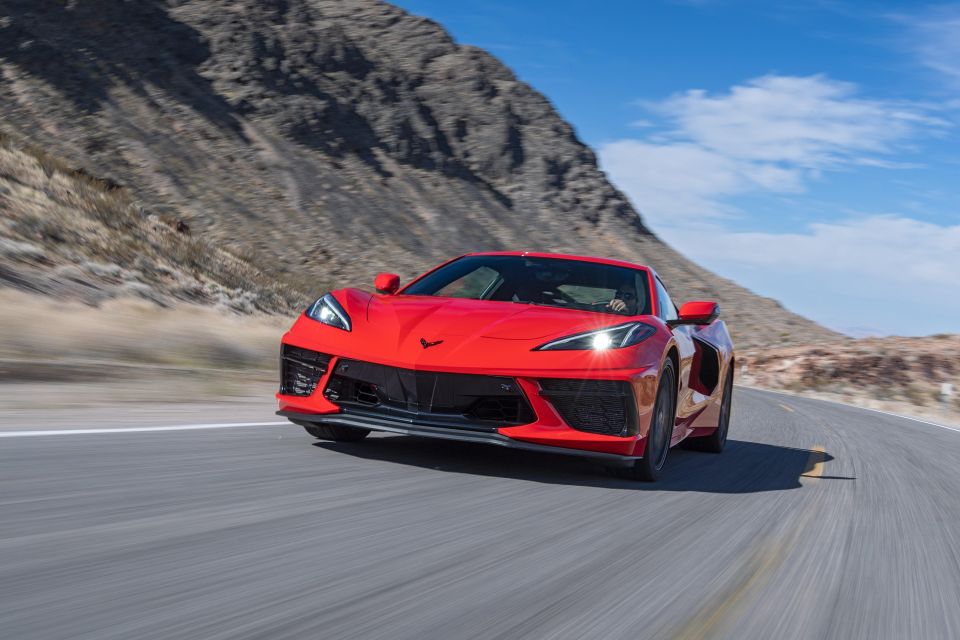
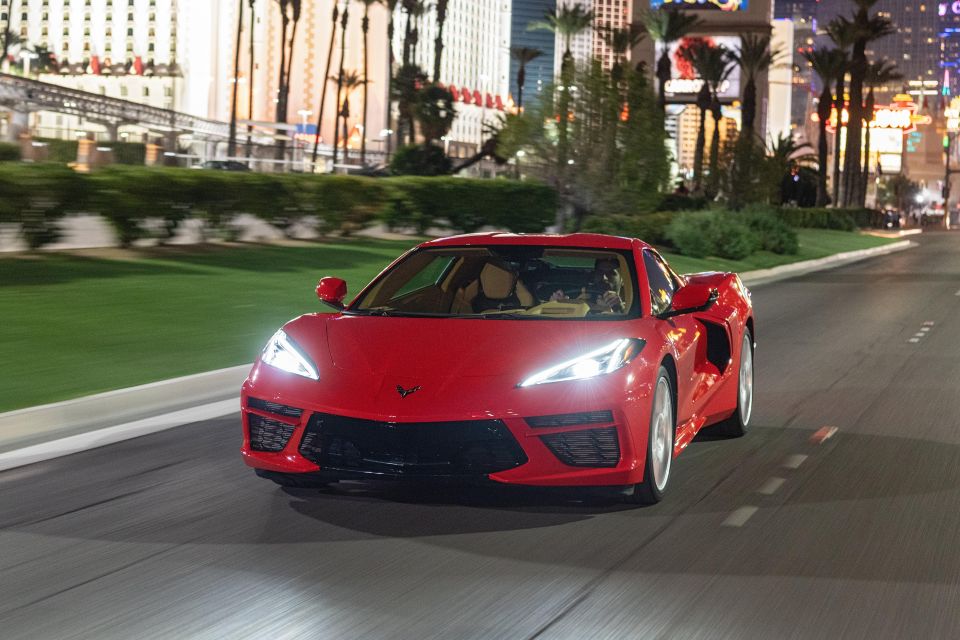

Overseas Editor

Overseas Editor


Overseas Editor

Overseas Editor
Where expert car reviews meet expert car buying – CarExpert gives you trusted advice, personalised service and real savings on your next new car.
It’s impossible to talk about the new C8 Corvette in Australia without talking about Holden, too. The car’s arrival next year might mark the beginning of the storied supercar’s sales in Australia – in right or left-hand drive form, it’s still not clear which – but it also signals the end of Holden’s 160-year history as a locally-designed and engineered brand.
Holden and Chevrolet, which currently imports a few versions of the Silverado ute, will get rolled up into something called GM Special Vehicles. This entity will import vehicles it reckons stand a chance of making a profit without the overhead of a dedicated standalone brand draining the bottom line.
Presumably GMSV will have the option of bringing in any vehicle in the GM line-up it thinks it can turn a buck on. So there is potential there for some interesting additions such as Hummer and other vehicles.
But, equally, if something gets imported and doesn’t cut it, it will likely get removed faster than a live maggot from a salad.

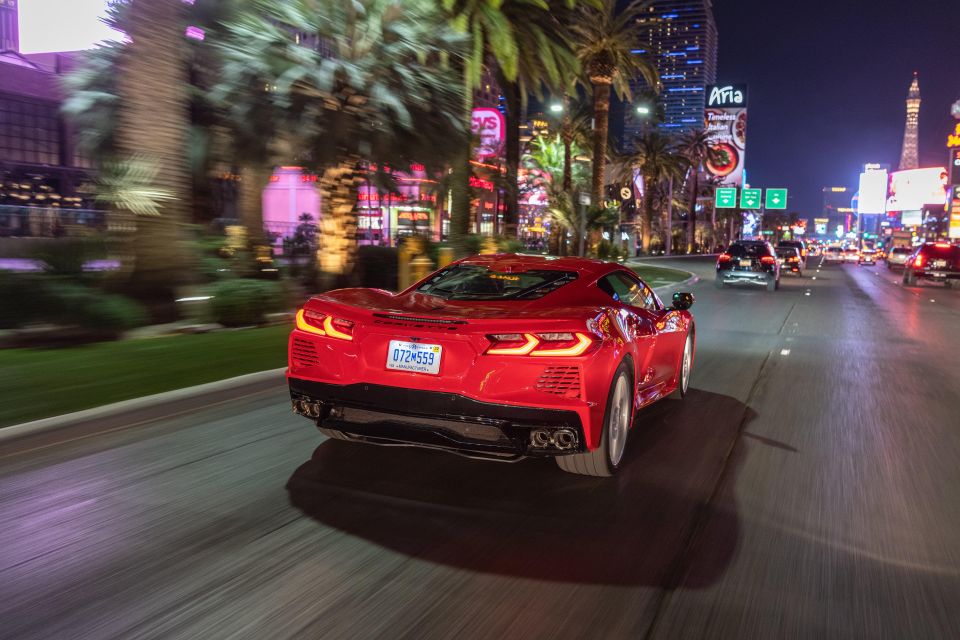
So, no pressure then C8 Corvette.
Don’t worry, it can handle it. The C8 is more than up to the job of keeping the lights on at GMSV HQ – and maybe even taking some of the sting out of losing HSV, as well as its parent company.
The irony here being that the C8 couldn’t have become what it is without Holden’s help.
The original mule for the mid-engined C8 was a humble Maloo ute – the logo is still there loud and proud on the grille – with the interior, windscreen and a-pillars from a C7 Vette, a GT3 spec rear wing and a small-block V8 mated to a Porsche PDK gearbox where the bed should be.
It might look like a mobile car crash, but ‘Blackjack’, as it was nicknamed, did all of the rolling engineering testing for the first two years of the C8 project.

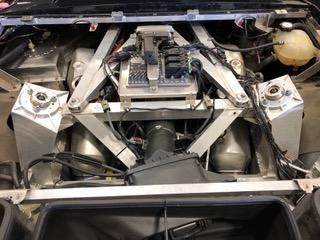
That started back in 2014 and has really only just finished now the car has officially gone on sale in the USA. Production has been seriously limited, first by a union strike at the factory and now by COVID-19. But none of that can dull what Chevy has achieved here with the C8.
Being the last to the mid-engined party, the engineers had the opportunity to drive the snot out of the competition before committing to the C8’s spec. One of the lead engineers we spoke with lavished praise on the Porsche Cayman and the Ferrari 488, but was fairly dismissive of the 911 Turbo S’s manners on the track.
So it’s maybe a slight surprise that the finished C8 wears its weight 40/60 front to rear, which is exactly how the rear-engined 911 distributes it. But we’ll get to how that works out later.
The car we are testing here is the C8 Corvette Stingray fitted with the optional Z51 package – likely this will be the standard spec of the cars that find their way to Australia. This, thanks largely to the performance exhaust system, lifts the engine performance 4kW to 365kW with a similar bump to the torque, but that’s only the tip of the iceberg of changes.
The Z51 gets better Michelin summer tyres, replacing the all-seasons on the base car, firmer suspension – our car was also fitted with the optional FE4 adaptive dampers which are frankly a must have – better aero, cooling, and larger brakes.
There’s a shorter final drive ratio and an electric limited-slip differential. And, if you have the FE4s, you also get a Performance Traction Management system thrown in, too. That’s worth the US$5000 package price alone.
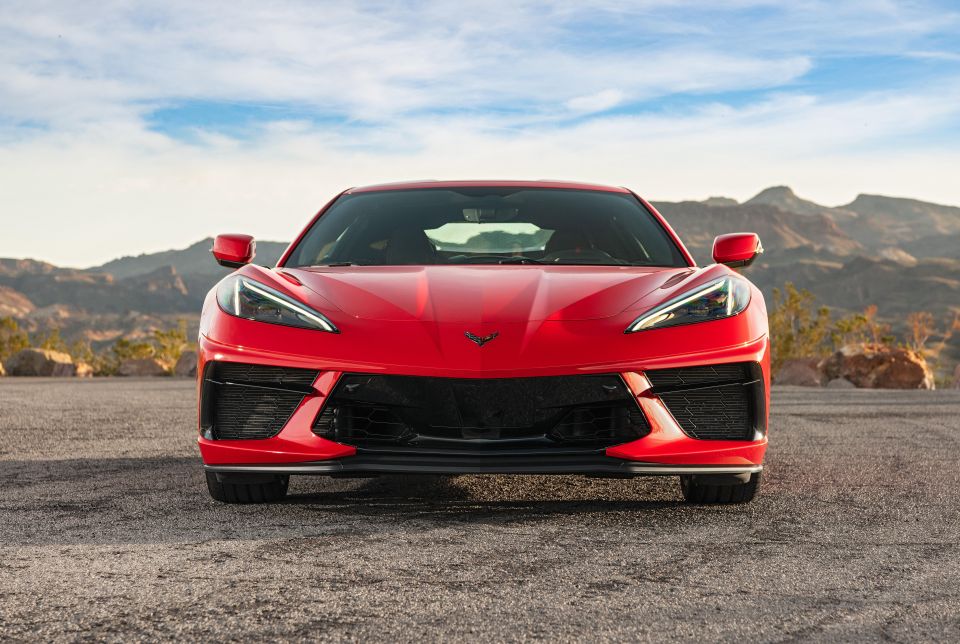
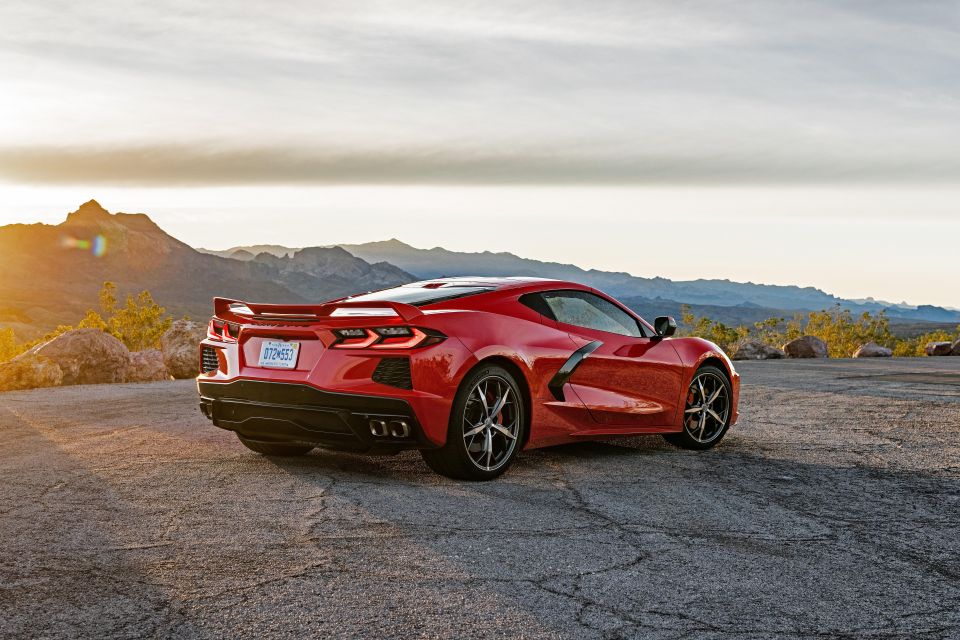
The end result is a car capable of doing almost 305km/h, firing off 0-60mph (97kmh/) in just under three seconds – 2.97secs to be precise – and lapping several car lengths a lap faster than the C7. But is it still a true Corvette, a blue-collar supercar for the masses?
Let’s see.
Specified with the Z51 package, the FE4 magnetic ride dampers, and the eight-speed automatic box – there is no manual version on the horizon – the C8 rolls out of American dealerships at US$64,995.
At current exchange rates, that works out at around AUS$100,000 before on-road costs.
Buy your new car without the stress. It's fast, simple and completely free.

Great service from Travis and team, second time I have used this business would not hesitate to recommend them to anyone
Craig C.
Purchased a Ford Ranger in Sunshine Coast, QLD
CarExpert helped Craig save $7,224 on his Ford Ranger, now let us save you on your next new car.
Get your BEST priceEven base C8 gets a stack of great equipment. That starts with the 6.2-litre V8 making 365kW of power and 630Nm of torque, driving though an eight-speed Tremec double clutch gearbox and a mechanical limited-slip diff. Brakes are four-piston Brembos.
The all-new chassis is now super stiff which helps make even the base car much better to drive. The standard suspension is a little less forgiving than then non-magnetic setup, but you still get several driving modes to tune the chassis to the conditions and your driving style. Tyres are all-season Michelin Pilot Sports.
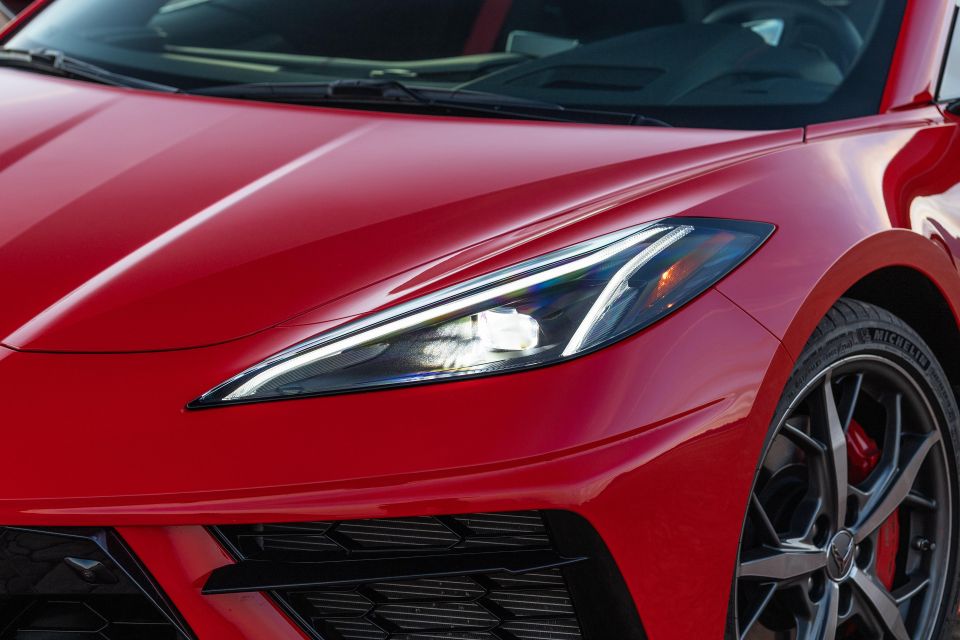
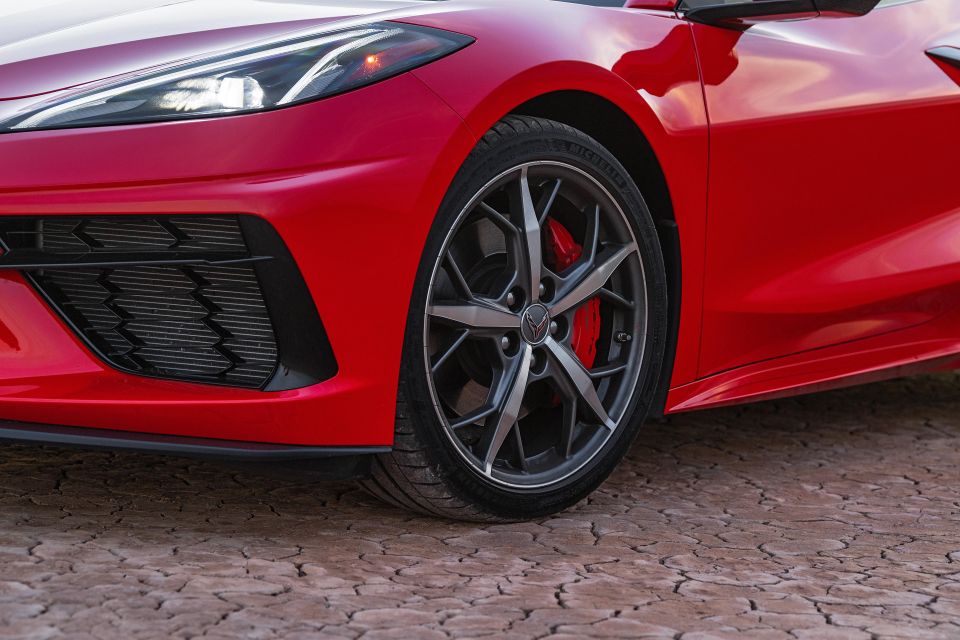
Showing the depth of thought that has gone into the C8, it’s available with a GPS-enabled axle lift which can store 1000 locations. So you just hit learn every time you want it to raise and it does it for you right before you get there the next time you’re close. Not even Porsche has that yet.
But that’s just the beginning of what’s on offer with the C8. Chevy has shelves heaving with extras to make your ‘Vette exactly how you want it.
No ANCAP test – we are still waiting for the American one – for the C8. But it has the full suite of US mandated safety tech: ABS, ESC, rear camera, and airbags, etc.
It adds a number of features absent on the C7. These are: rear cross traffic alert, blind-spot monitoring – essential on a car like this with such huge blind spots – front kerb view camera, and rear park assist.
No sign of any lane-keeping or pedestrian protection systems, for now, though.
The C8’s interior befits the massive jump forward made by the car as a whole. Where there was definitely the whiff of hire car about various bits of the C7’s interior, the C8 is solidly up to par with – and in some ways, such as visibility and ease of use, better than – the supercar competition.
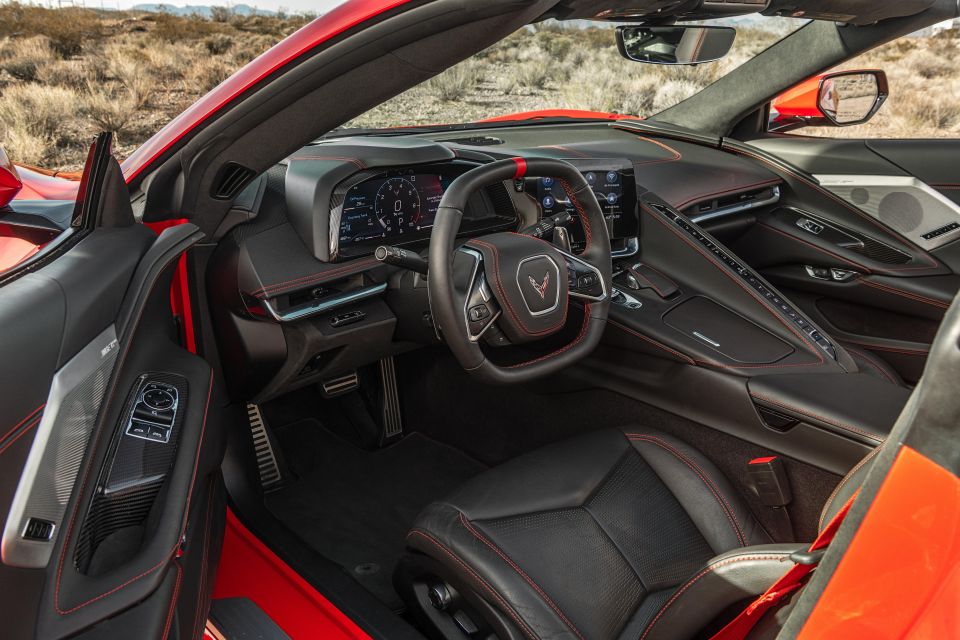
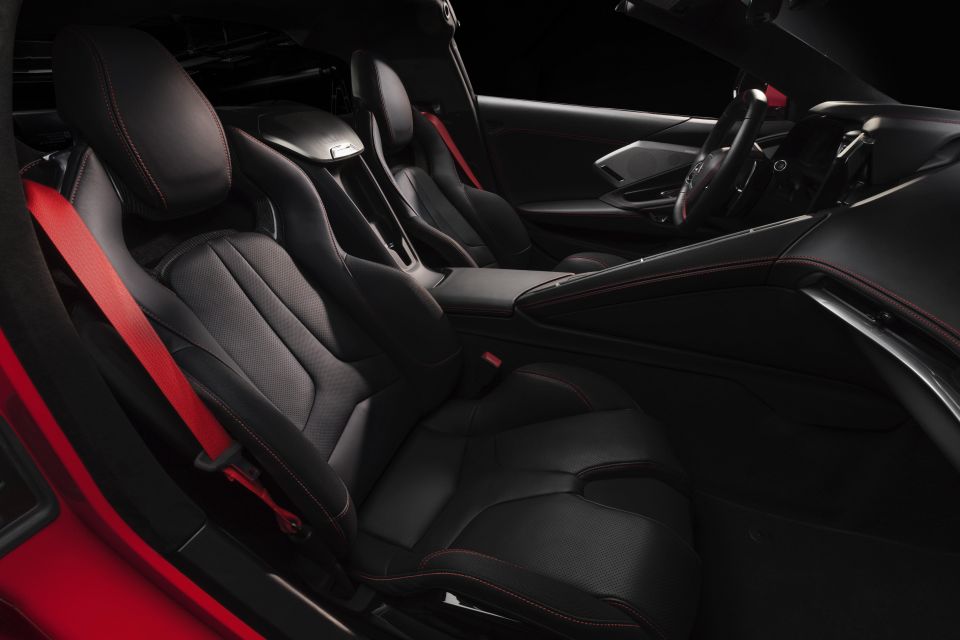
The quality of the materials, the detail and clarity of the graphics and the overall layout of the controls is on another, higher level. The odd squircle steering wheel even makes sense, allowing you clearly to see all of the key dials without having to move your head, which you do in the 992 Porsches.
There are three different seat types available, GT1, which is standard, then GT2 and Competition, the latter being a near race bucket. The car we drove had the heated and cooled GT2s and we wouldn’t have swapped them for either of the others.
The driver environment feels very fighter jet-ish, with all the screens and controls angled towards you, the final part of the cockpit feel being the vertical sweep of HVAC switches creating a partial wall from the passenger cabin.
While there is plenty of head- and legroom in both seats, the passenger seat feels a little claustrophobic thanks to the HVAC room divider between the two seats. In a car with the C8’s performance, the lack of a passenger grab handle is also a curious omission.
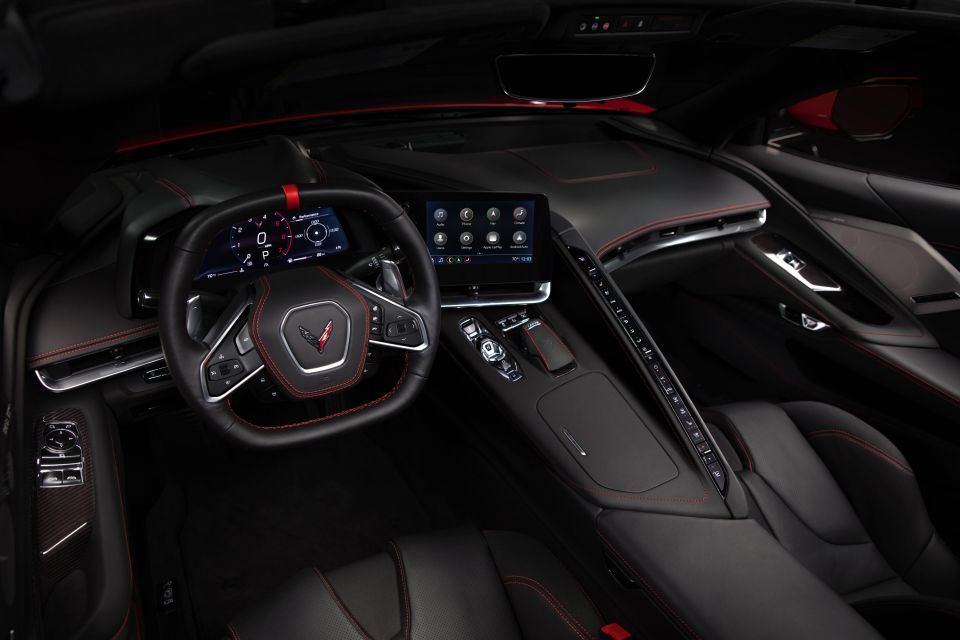

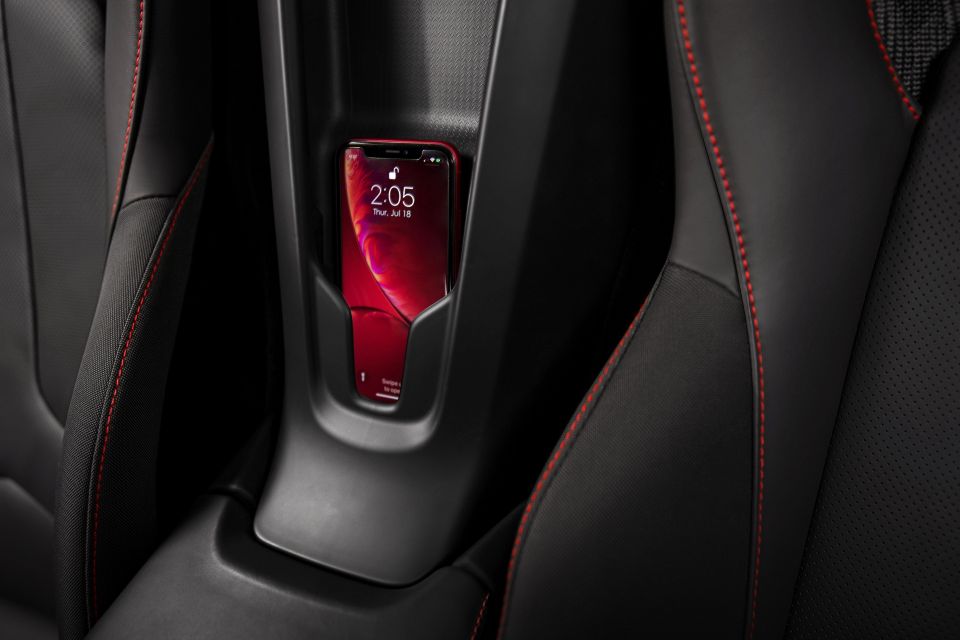
The net effect when you push on a bit is they hurriedly grab the divider and hit a handful of the HVAC buttons which can lead to sudden changes in seat and cabin temperature. Entertaining the first time it happens, but might get old fast.
An honourable mention here to the storage available in the C8. The front boot is almost the same size as a 911’s and the rear boot, even though it’s oddly-shaped, holds far more than seems reasonable. Chevy claims a golf bag will fit, if that’s of any interest.
Nothing! Chevrolet engineers have been waiting decades to say that. But there aren’t that many surprises in the mid-mounted engine room. The dry-sumped, naturally-aspirated 6.2-litre V8 LT2 will be mostly familiar to anyone who’s seen a GM small block motor.
The LT2 builds on the outgoing LT1’s abilities by improving lubrication, more efficient intake and exhaust, and a new camshaft. Otherwise it still has the same bore and stroke, compression ratio, and forged crank and rods.
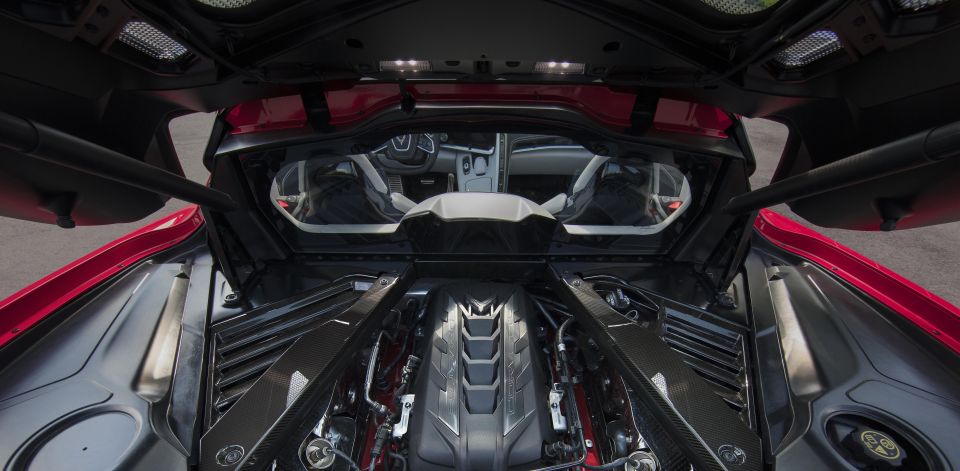
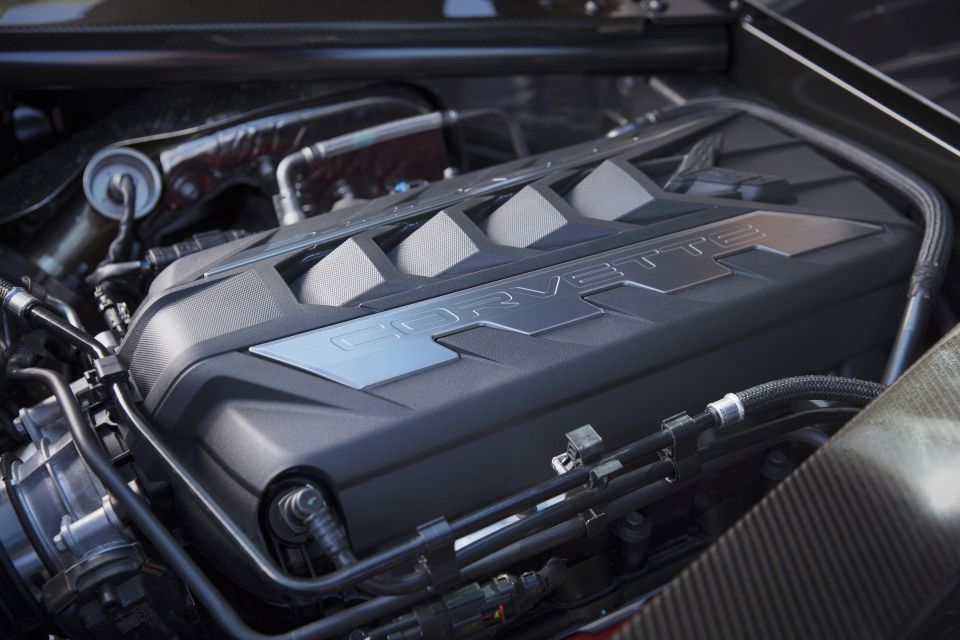
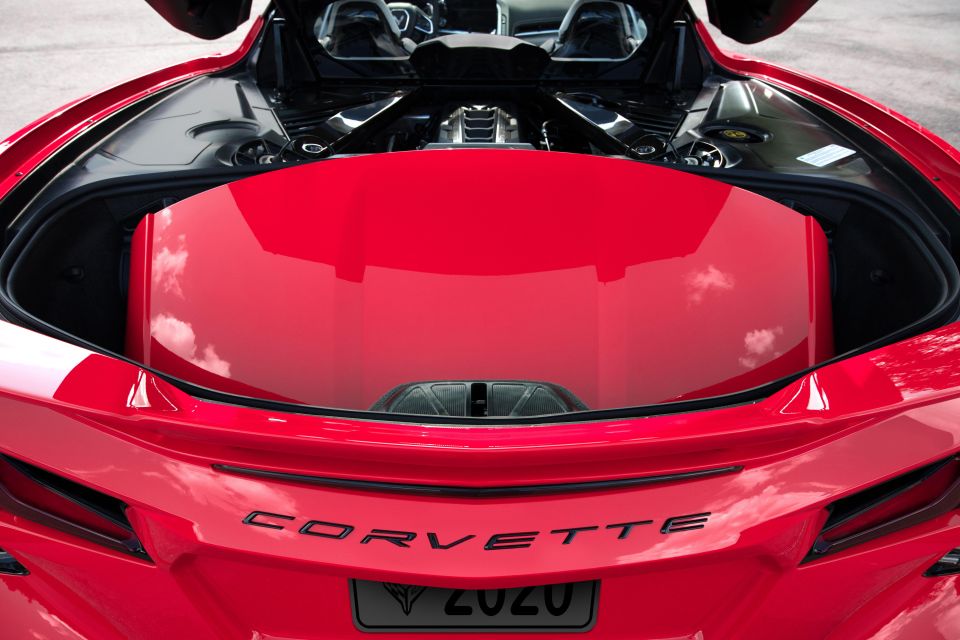
The LT2 is a little taller than the LT1, as the engine is now mounted behind the driver and forward sight lines are not being affected. The intake has also been moved to the back of the car, to shorten the distance between the intake valves and throttle body, which improves flow and response.
This is the $64,995 question. And the quick answer is: great. But it’s completely different from all previous Corvettes. So much so, they could have reasonably named this car something else entirely.
You can tell it’s going to be a different beast within the first 10 metres of driving. If you think it’s going to be a loud, raucous ride like the C7, think again. In any one of the six driving modes the engine is a distant whisper until you bury the throttle, wind roar around the wing mirrors and a bit of tyre slap being the dominant sounds at 70mph.
The FE4 dampers also add to this sensation of peace and calm, filtering out and countering road irregularities almost before you’ve hit them. The steering is light and immediate, if a little low on feedback. The brakes are by wire and work fine, if without the absolute finesse or feel of the class best.
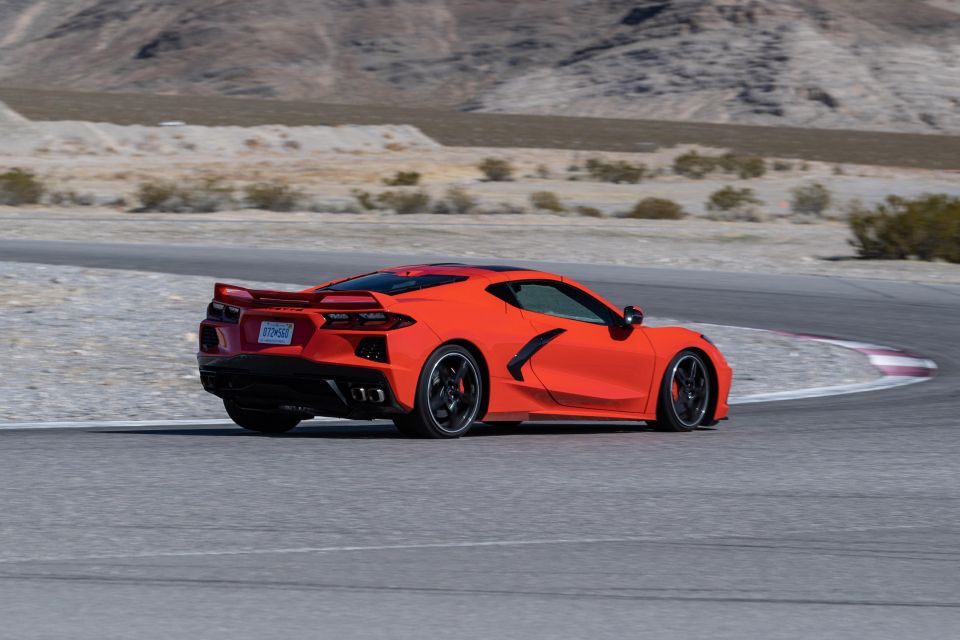
One of the most glaring problems with the cabin is the rear three-quarters view. Or rather the total lack of it. The side mirrors only give you a sliver of view and even trying to turn your neck like an owl doesn’t help. So pulling out of junctions requires care and skill will often be accompanied by a shriek from your passenger.
The infotainment system does its best to help, with blind spot cameras as standard but it’s still not great. Unlike the rest of the system which is now bang up to date, The C7’s My First Dash graphics were poor. The C8’s are crisp, sharp and delivered smartly. To make the most of the new quiet cabin there is a 14-speaker Bose Performance sound system which is easy to access via the NFC Bluetooth.
The seats hold and support you in such a way there are no pressure points so they remain comfortable for multiple-hour stints. Allied to the low-effort controls and an engine with more flexibility than a Yoga teacher and the thirst of a cactus – 25mpg (9.4L/100km) is doable with ease – and you can see how the C8 could be one of the best GT cars on sale.
But if you’re thinking that will make it weak at the track, think again. All it takes is a spin of the driving mode control to Track plus a couple of presses on a switch and the C8 transforms from a magic carpet to a raging bull. Quite a quiet bull, truth be told, as the engine’s efforts are largely lost in the wind behind the car. But not the performance
Which isn’t delivered in exactly the way we were expecting. Typically with a mid-engined car you can enter a corner faster and maintain a higher speed through the bend than a front or rear-engined car as you have better balance. But what Chevy has done with the C8 is give it’s mid-engined car, rear-engined handling manners.
With a weight distribution of 60/40 rear/front, the C8 does not rotate and stick as neutrally as, say, the mid-engined Porsche Cayman. It drives more like a rear-engined 911 in that you have to scrub off some entry speed and then power it out using the huge rear grip.
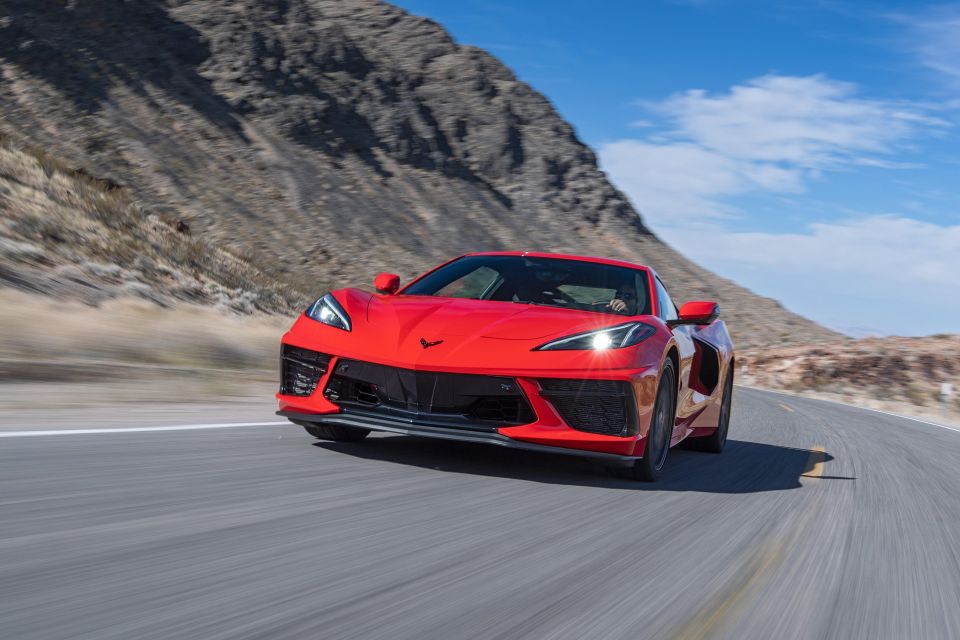
The steering is appreciably quicker – the car responds to inputs 200ms more swiftly than a C7, which is a light year in reaction time. Talk to any pro gamer and they’ll tell you – and requires fewer inputs to stay on your chosen line. But, while it follows some of the 911 formula, it lacks the German car’s ultimate feel.
Part of the reason for this is the engineers have dialled in a level of understeer to stop the C8 doing the old 911 party trick of exiting the corner facing the opposite direction to how it came in. While this stops the car from over-rotating mid-corner, it does mean you have to drive around this part of the car’s handling. Lift-off oversteer anyone?
Don’t worry about using all the performance, though. The cooling system, a major problem in hot climates on the C7, has been completely upgraded The C8’s thermal ceiling is 38 degrees celsius, up from the 32 degrees in the C7. So now you can thrash it with impunity almost irrespective of the ambient temp.
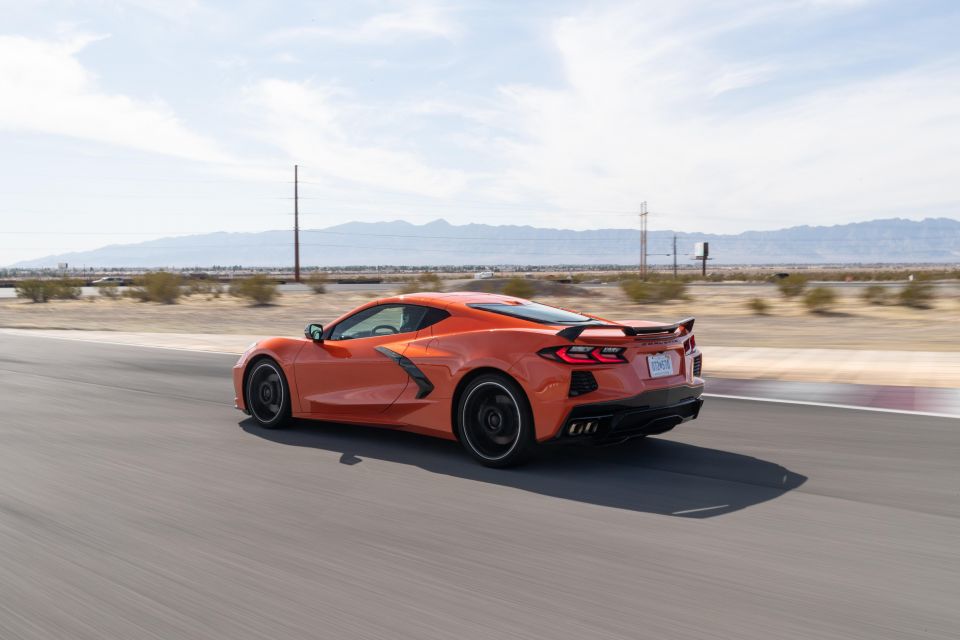
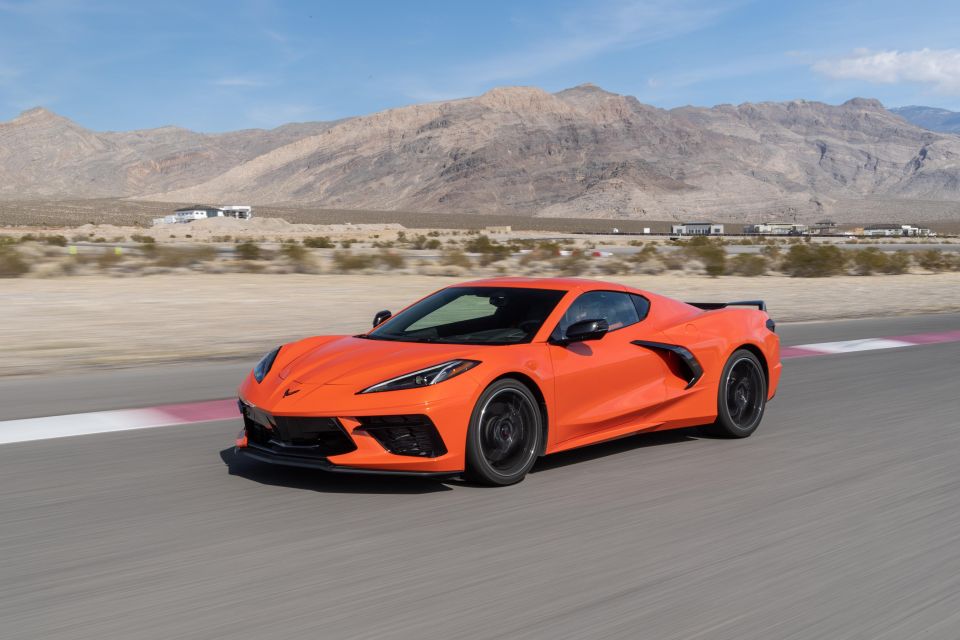
The brakes, which bite on steel rotors, are good not great. They are more than enough for normal road use and fine on the track once you’ve found their limits. The tyres are the real limiting factor, as you can get to full ABS quite easily braking hard from 130km/h or more.
The Tremec DCT gearbox – the company’s first, shared with the new Ford Shelby GT500 – is also more than fine in most driving situations. It’s not quite as perceptive as Porsche’s PDK, but it’s close. On the track, leaving it in auto was almost as quick as doing it yourself.
There were only a couple of instances that it rejected a downshift when I wanted one which, with the brilliant way that PTM system works probably meant I didn’t have the grip to do so. But still…
After a day on the road and another on the track, it’s clear the C8 has a driving signature like no other car you can buy today. It’s appreciably better handling, faster, quieter, safer and more comfortable than the C7. But it still demands you to drive it in a way unique to the Corvette.
There’s nothing about the C8 Corvette’s design or spec that would suggest that it’s going to be ruinously expensive to run. Other than the usual fuel and tyre costs, which are driven as much by your driving style as anything else, there are no nasty surprises ahead.

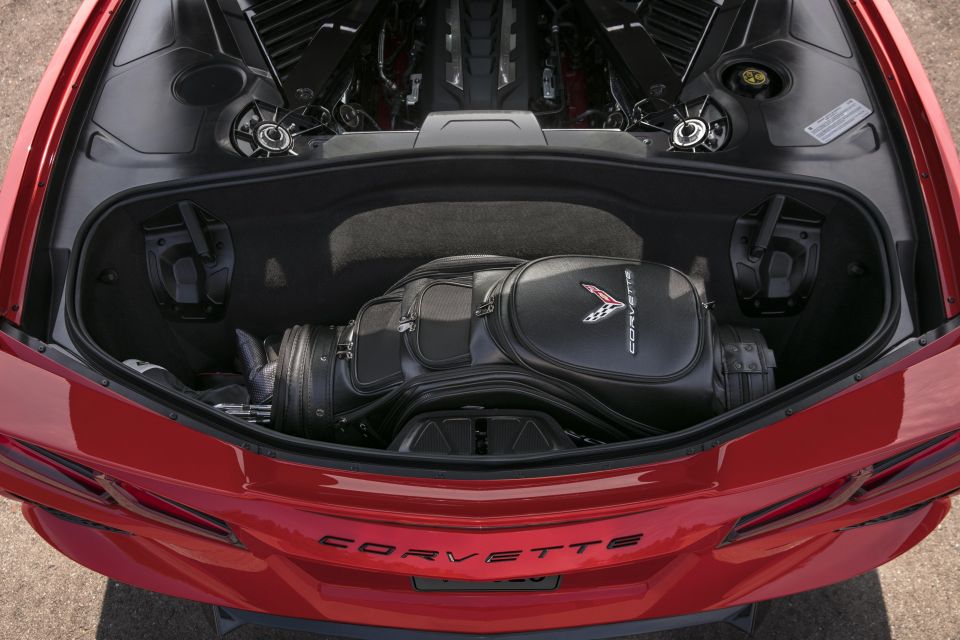

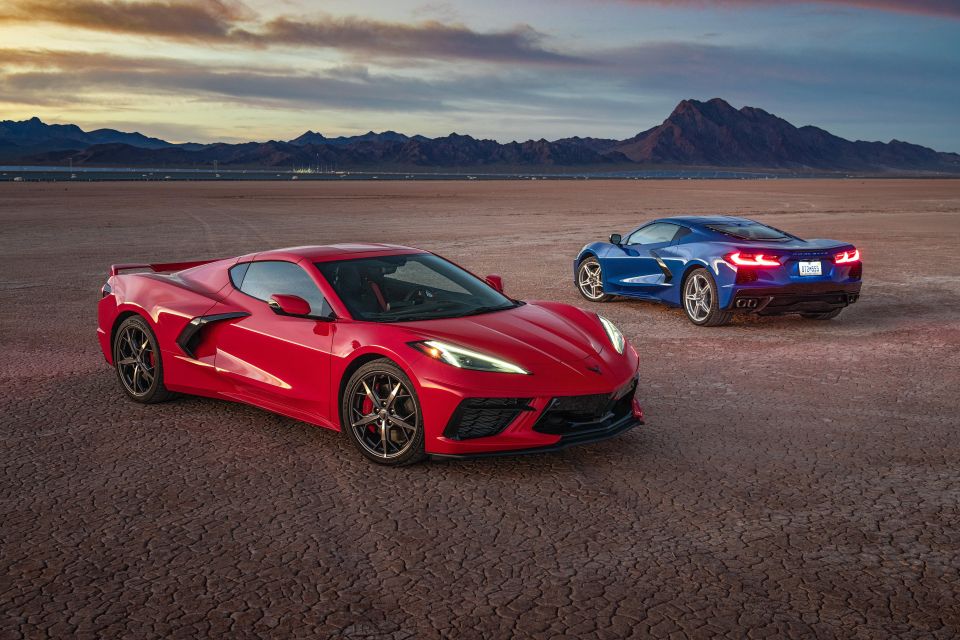
Steel brakes might make a bit of a mess with their dust but they are cheap to replace if you want to track the car. There are no engine-out service intervals to change plugs or adjust valves. And you’ve got the world’s second-largest carmaker’s distribution network supplying you with spares, so you shouldn’t have to wait or over pay for them.
In terms of fuel usage, as mentioned above, despite some sustained high-speed driving we saw 20-25mpg, which is near witchcraft. That’s the smaller American gallons by the way, so the real numbers will be even better.
Buy your new car without the stress. It's fast, simple and completely free.

Great service from Travis and team, second time I have used this business would not hesitate to recommend them to anyone
Craig C.
Purchased a Ford Ranger in Sunshine Coast, QLD
CarExpert helped Craig save $7,224 on his Ford Ranger, now let us save you on your next new car.
Get your BEST priceIt’s been decades in the making, but it’s fair to say the rewards more than make up for the time it’s taken to get here.
It’s lost a lot of the traditional burly Corvette muscle-car-on-steroids, knife between the teeth character, but it’s replaced them with a finer, more focused but more flexible personality which makes it even more usable than ever before. Think of the C8 as the blue-collar C7’s college-educated elder brother.
It won’t make up for the loss of Holden and HSV on its own, but the C8 isn’t a bad peace offering from GM. It’s not just a better Corvette. It’s a completely better car. And, let’s not forget, it will always have a Holden called Blackjack partly to thank for that.
Where expert car reviews meet expert car buying – CarExpert gives you trusted advice, personalised service and real savings on your next new car.


Gautam Sharma
7 Months Ago
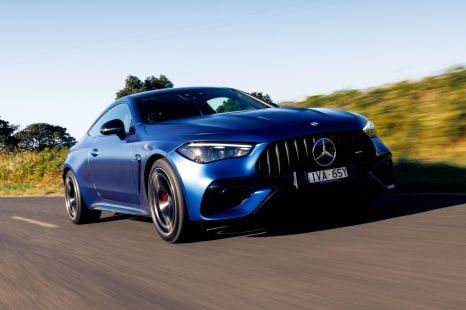

Josh Nevett
6 Months Ago
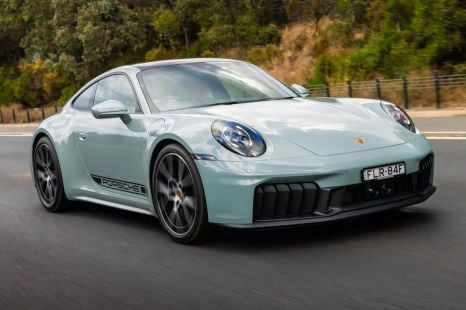

Alborz Fallah
6 Months Ago


William Stopford
2 Months Ago


James Wong
1 Month Ago


Matt Campbell
17 Days Ago